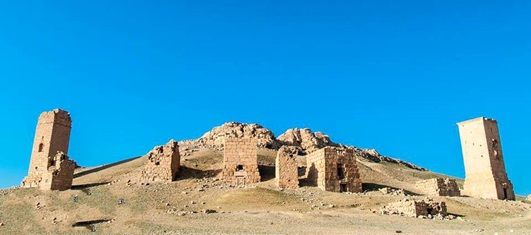The cemeteries of Palmyra are among the unique and remarkable features of the city. Many of these cemeteries date back to the Hellenistic and Roman periods. The tombs’ design and ornamentation manifest Palmyrene beliefs in life after death.
There are three types of burials in Palmyra, namely, the Tower Tombs, which are the earliest type of these burials and date back to the first centuries BC. Each tower tomb consists of several stories that are connected with a stone staircase.
 Elahbel tower burial, which consists of four stories, is considered one of the most beautiful models of tower burials, in addition to Yemlico, Ketot, as the Tower Tombs is unparalleled in the cities of the ancient East.
Elahbel tower burial, which consists of four stories, is considered one of the most beautiful models of tower burials, in addition to Yemlico, Ketot, as the Tower Tombs is unparalleled in the cities of the ancient East.
As for the second type, it is the “underground burials,” which spread in the second century AD. Some of which date back to the first century. These burials have a special design that consists of a main hall and subsidiary spaces, covered from the inside with a layer of gypsum, where scenes from life, myths, pictures of the dead, geometric and plant decorations and inscriptions are engraved on it. The Three Brothers Cemetery, which dates back to 160-191 AD, is considered one of the most beautiful types of the underground burials due to its carvings, decorations, colorful murals, and oriental artistic traditions. As well as the cemetery “Porfa and Bolha”, which contains rare stone carvings and decorations.
The third type is the “House burials” that date back to the end of the first century AD. This burial consists of one floor, preceded by a beautiful entrance with a door made of carved stone.”
The cemetery contains an open courtyard surrounded by corridors carrying ceilings and is surrounded by terraces in which the tombs were built. Among the most beautiful of these burials is the tomb of Olaimi ibn Zubayda, and the tomb of the White Palace, which is located to the west of the Elahbel temple.
Palmyra also has what is called ” Tadmur Burials,” which is a single tomb covered from the inside with carved stone panels. The dead may be placed in a wooden coffin inside the earthen tomb.
Amal Farhat


